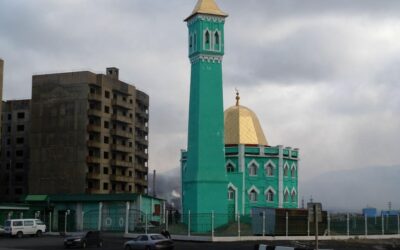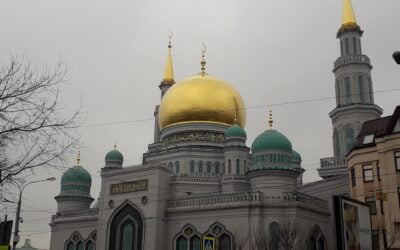Naryn-Kala
- Naryn-Kala is an ancient pre-Arab citadel, part of the Derbent fortress, connected to the Caspian Sea by double walls designed to block the so-called Caspian gates to the Persian state.
- Derbent is located in the most strategically vulnerable place of the Caspian Pass, where the Greater Caucasus Mountains are closest to the sea, leaving a single narrow 3 km strip of plain. Derbent Fortress is part of a large defensive system that protected the peoples of Transcaucasia and Western Asia from invasions by nomads from the north. The system included city walls, a citadel, embankments, and the Dagh-Bary mountain wall.
- From the west, the Derbent walls adjoin the Naryn-Kala citadel, which was built after the 10th century, since before that a signal fire was kindled at this place when the enemy approached.
- The fortress known today was built in the 6th century on the Dzhalgan ridge by order of the Persian ruler Khosrov I Anushirvan (531-579) (“Immortal in Soul”) from the Sasanian dynasty.
- Since 735, Derbent and Naryn-Kala became the military-administrative center of the Arab Caliphate in Dagestan, as well as the largest trading port and the center of the spread of Islam in this land.
- As a result of the Caspian campaign, the city of Derbent became part of the Russian Empire. From the dugout, which is now a local landmark, Emperor Peter the Great moved to the Khan’s palace, to whom the beys of Derbent presented the city keys on a silver platter covered with Persian brocade (stored in the Kunstkamera of Saint Petersburg) with words.
- In some sources, the Derbent fortress was called the “wall of Alexander the Great” because of the belief in the legend that it was built by the great conqueror. But Alexander the Great was never at the Derbent gates.
- During the Persian expedition of 1796, the fortress was retaken by Russian troops under the leadership of General-in-chief Valerian Zubov, who placed the general headquarters in the citadel.
- Archaeological excavations are still underway on the territory of Naryn-Kala. Today, Naryn-Kala is included in the UNESCO World Heritage List and is one of the important sights.








